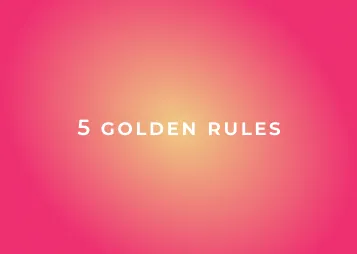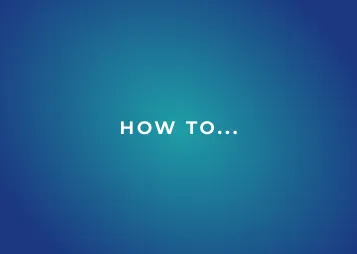Mark Burrett is the Head of EMEA Sales at nudge, an impartial, global financial education platform. Mark and his team commit to practices that prevent pipeline leakage early and regularly in the sales process, so as to avoid issues further down the line.
Jiminny’s CEO, Tom Lavery, quizzed Mark on the topic of pipeline leakage, and how businesses can plug gaps and stop losing prospects along their sales process.
Pushing unqualified leads down the pipeline
We have definitely relied too heavily historically on rep insights into deal health, with quite emotion-led decision-making.
We know what salespeople can be like as well. When a deal is about to leak out of your pipeline, sometimes letting that deal go is harder than pushing it a bit further across the course of the year, or pushing it out a few months.
So you need to create that fail-safe environment where you empower your rep to close lose a deal. You want to create an environment where they're not worried about close losing a deal when they've identified that there is no opportunity present.
Lead qualification
We've got it all in our sales playbooks and within that we have mapped out our ideal client profile extensively.
Who are the organizations? There's a gazillion organizations out there, but who are the organizations that are going to buy nudge?
And then within those organizations, identifying a pyramid of buyer personas and being targeted in our prospecting.
Who are our champions going to be?
Who is in that wider sphere of influence?
Not necessarily part of the decision-making process, but a trusted voice within the business. That has helped drive momentum in our deals. People being absolutely crystal clear on who we're going after.And that's challenging.
Because you might be going after three or four specific industry verticals, which we do, but then you've got a whole load of other industry verticals that are kind of coming in. So you have to be really smart about where you invest your time. Particularly with the type of product that we're selling. It's an impartial financial education platform. A lot of organizations out there at the moment are stepping up and wanting to support the financial health of their people. But it's not always necessarily the right organization for us to be speaking to.
So really identifying is there a history of this organization investing in their people? Is there a history in this particular sector of investing in people?
And all of that helps us to ascertain whether it's pipeline-worthy.
We also place a lot more emphasis on multithreading early on in the deal cycle and actually saying to reps ‘Should this deal be pipeline if you've only got one contact within the opportunity?’
So in terms of making sure pipeline leakage doesn't happen, it’s the steps we take before a deal enters pipeline that often makes the difference.
Moving sales opportunities along the pipeline
If our reps are unable to get a qualification ahead of a first discovery meeting, before we decide whether it's worthy of being qualified pipeline, it sits in what we call an ‘opportunity phase’.
That has enabled us to identify what we're unsure about in terms of its quality versus what we know is good.
I think the other thing that's really key for sales leaders is to communicate with their teams the criteria for your different sales stages within the process.
In HubSpot, we have a series of questions reps have to answer to enable your deal to move to the next stage.
So things like that have really helped us mitigate pipeline leakage or slippage, and identify where we've got a decent opportunity versus rubbish going into our pipeline.
We have clearly defined buyer challenges that we know we can address through our product. But I think what's changed for us, which has also really enabled our pipeline, is we’re not just looking at what the buyer challenge is, but we're looking at what the organizational challenges and priorities are that we can address as well.
So things like global mobility, by way of example, that's not something that just affects our buyer, it's something that affects the fluidity of the whole organization.
Preventing pipeline leakage on a daily basis
Number one is making sure that you've got an amazing relationship with your marketing team, so make sure that you're completely aligned with them.
We know that there are periods of quiet in any deal cycle so making sure that there's constant value adds from sales and marketing really helps.
We make sure that the team have a mindset where there's not necessarily a need to always be pushing your product or selling. Actually being the consultant, being the trusted advisor - we talk a lot about that as a team and I think that's made a massive difference.
What are the other things? I think constant use of our enablement technology. So we're always in LinkedIn Sales Navigator, looking for new stakeholders, looking for different people across the organization, mapping out that sphere of influence that we can build within our deal process.
We also have regular, weekly deal clinics.
We have the whole team, it's a really supportive environment and I think that's key. We're a very honest bunch, so we're not afraid to challenge each other and have tough conversations.
And that's really helped us get the rubbish out of our pipeline.
Surplus to that, we have a 30-minute accountability power session every Friday at 3.30, where you have to come and deliver pipeline updates:
- Pipeline you've created.
- Pipeline you’ve moved through the process.
- Pipeline that's either Closed/Won or Closed/Lost.
So either an opportunity to celebrate or commiserate for the end of the week. This isn't ‘bring a beer and let's reflect on the week’. This is an accountability meeting. So this is like ‘what have we done and where are our deals at?’
And by virtue of us talking so often about our deals throughout the week, whether it's in our deal clinics or in our accountability meeting, we all know each other's deals, we're all invested in each other's deals. So we've just got so much brain power going into every opportunity, which has been really helpful in driving fluidity in our sales process.
Finally, I think also what's a challenge with our buyer, is we're seeing it more now that people leaders across the kind of HR/benefits/well-being space don't always get that seat at the table, they don't always get that voice at the top of the organization. Which is why it's so important for us to continuously think about who we can bring into our deals to strengthen that opportunity.
Forecasting by asking ‘how do organizations buy?’
One thing that we've really worked hard to understand, and it's a big part of our playbook, is ‘how do organizations buy?’
If they have a very complicated buying model, your chances of success are smaller. We sell a global product, we're in over 120 countries. We've probably got ten to 15 core markets that we spend a lot of time selling to.
When organizations buy regionally, you may as well add six to 12 months onto your deal cycle, but when they buy centrally, it's much faster. So these are all things that we need to ascertain early on to really identify how we can forecast our pipeline accurately and ensure that there's no pipeline slippage or leakage.
What would you advise an organization facing pipeline leakage?
At nudge, we've always had a growth mindset. We don't allow ourselves to get comfortable in our sales process. We're always thinking of new ways to innovate. If I think about what that means in terms of advising other organizations facing like pipeline leakage, number one; sales and marketing need to be 100% aligned.
So we moved from having a weekly sales and marketing meeting to having a fortnightly one, and instantly saw the impact in a negative way by not having that regular line of communication between the two teams.
I also think about perception in your business. So we refer to ourselves as one big commercial team rather than all these siloed teams. And I think that's really helped people to grasp things like new revenue, client expansions, client upsells, as one big important commercial cog.
So I'd always recommend delivering this in a playbook format that becomes your sales bible.
We've spoken a bit about understanding your buyer personas, understanding your client profiles, and things like a sales methodology help. We've always known about MEDDICC, but I wouldn't say we've necessarily always sung religiously to the MEDDICC framework.
Pre-deal cycle, make sure that everyone's really clued up on those methodologies, and you have a really effective implementation on those, people understand exactly what's required of them and the quality questions that they can ask in a discovery to get the answers they need and get the process off to the right start.
We've touched on things like multithreading. You can have ten people in your deal, and if the organization that you're working with has gone through a massive cost-cutting exercise, that's, just bad luck.
But I think what's inexcusable, particularly in things like mid-market and enterprise selling, is not widening your sphere of influence and not bringing other people into conversation. And where people get this wrong is they don't ask the question in a way that makes the person that they're speaking to feel valued.
So we ask very gentle questions. Like ‘we can see that you're extremely passionate about financial well-being, but we know from our experience that to get that executive level buy-in, we really need to drive up interest in this particular solution. Who else cares about this as much as you do?’.
Timing. We can talk about it till we're blue in the face, but the timing is everything. So if somebody said to you ‘not now’, it's like ‘okay, so when?’. And then what do you do between that gap to build value.
And then finally, we use technology in our process now more than ever, and I think making sure that whatever technology you bring in, it truly enables your team.
There’s a lot of people talking about AI, we use Jiminny. So for the first time, our business has this conversational intelligence, where we analyze calls. We can do one-to-one coaching, so managers and AEs sit down and pick a couple of calls. We really get into the transcripts, all the keywords that are coming out, and that's been a game changer for us and we’re excited to see how that continues to evolve.
Using Jiminny's conversation intelligence platform, we look at our ‘solution mapping’ phase, which is the longest part of our deal cycle. It’s where we have the biggest challenge, that's where we tend to either get ghosted or things go very quiet for a period of time, before moving into what we call our finalist stage.
From there, we know that if we've got to that kind of decision-making, the prospect is choosing between you and one other. Based on what we've learned in the process, we get a very good feel through Jiminny whether a deal is going to go on to Closed/Won.
Want to dive deeper into fixing pipeline leakage? Find out how Jiminny becomes an integral piece of sales pipeline management software.





.webp)






